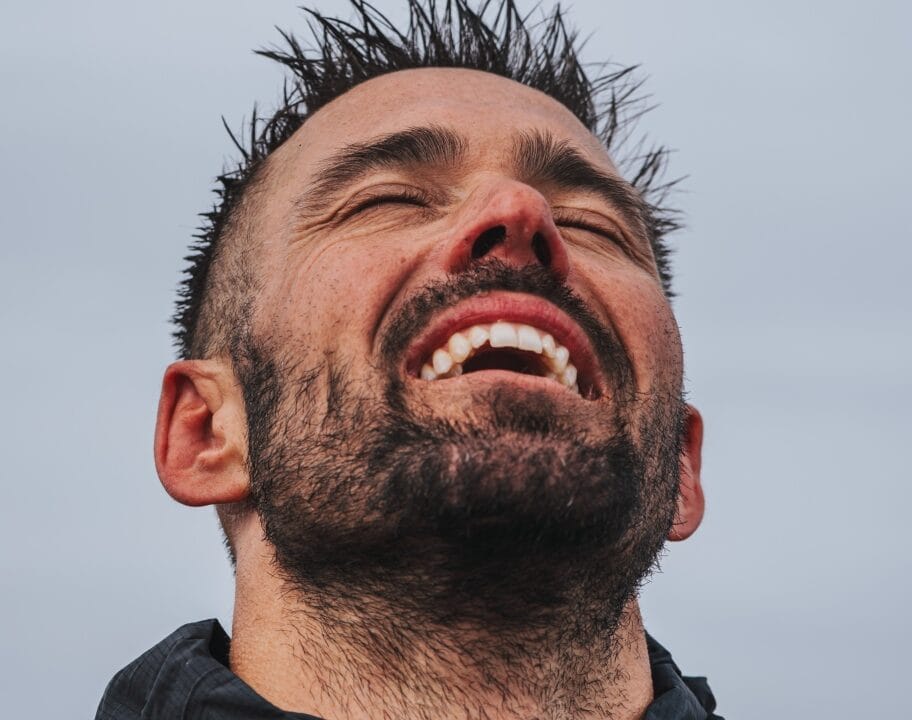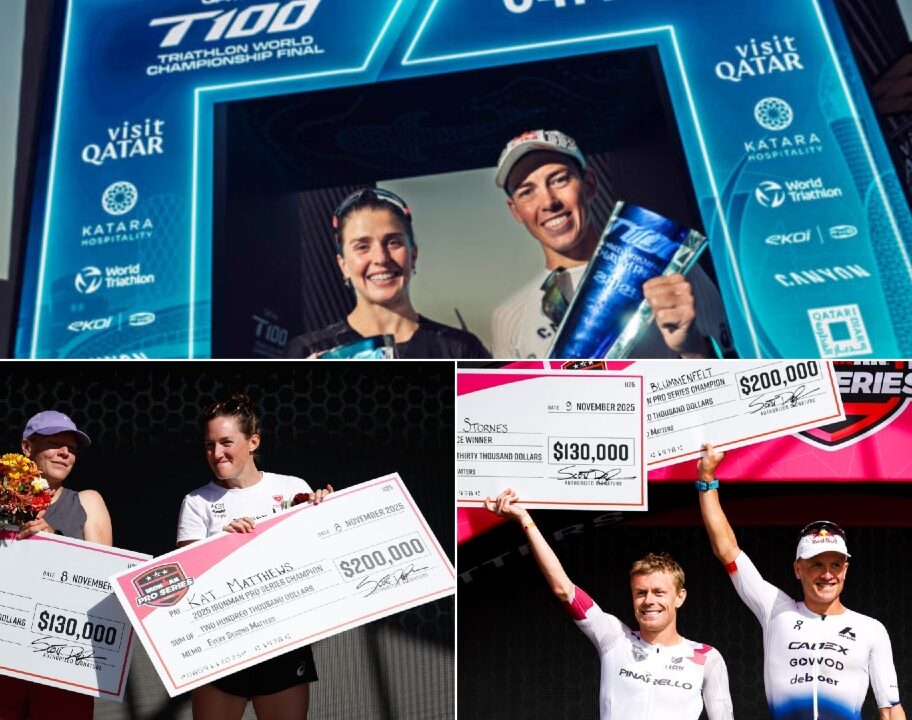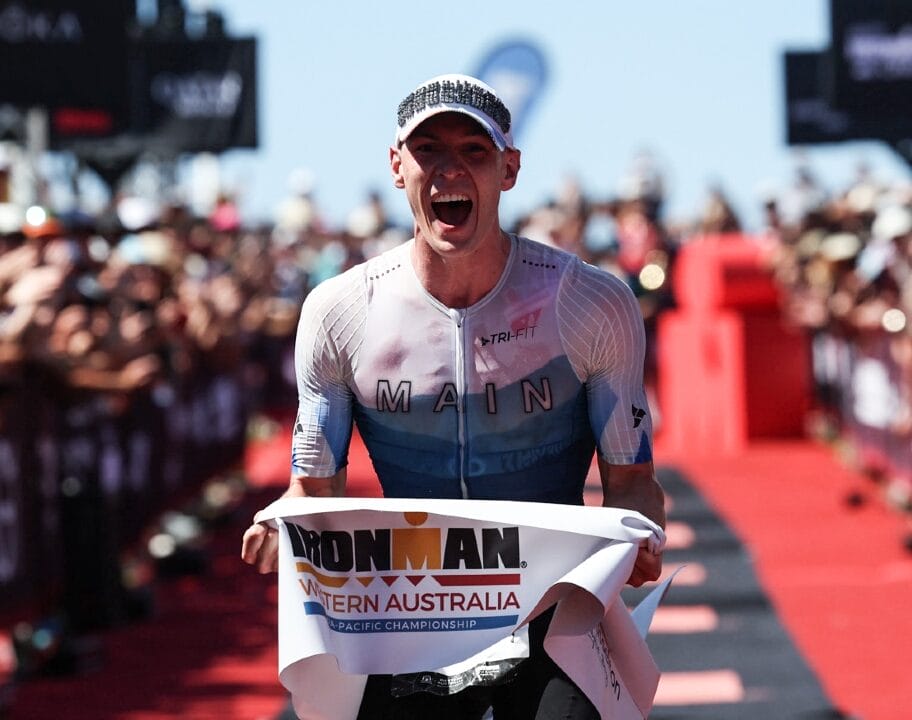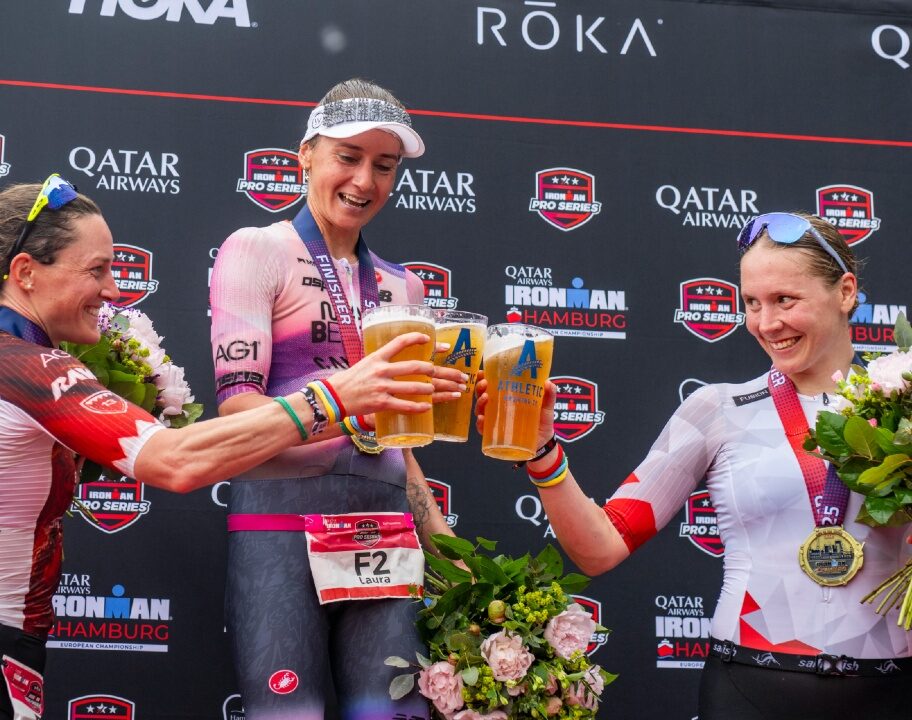Experiencing muscle soreness after hard swim, a long run or a tough bike session is a normal sign that your body is busy adapting to your training. But when that muscle soreness lingers for days and prevents you from being able to complete the rest of your weekly training plan. It can become a hinderance to making progress.
We take a look at what you can do to relieve sore muscles and speed up your recovery between training sessions so you can stay consistent.
How to prevent sore muscles
Experiencing sore muscles is part and parcel of doing an endurance sport like triathlon. When you’re training several times a week, it’s normal to experience some degree of fatigue and tightness. But there are steps you can take to mitigate the level of muscle soreness you’re likely to experience.
wHAT IS DELAYED ONSET MUSCLE SORENESS?
Build a strong aerobic base to support higher intensity workouts
High intensity interval or tempo sessions place a greater load through your muscles than the easier, steady state sessions. These high intensity training sessions have an important place in your training programme to stimulate the adaptations your body needs to get stronger and faster. But it’s important to equip your body with the tools it needs to withstand these hard efforts.
Aerobic base training refers to the longer, sustained, easy efforts. These sessions help you to develop strength and stability, promote good form and help your body to become more efficient at transporting blood to the muscles by developing your capillary networks. Think of the easy aerobic work as building a strong, stable platform for you to springboard off when it’s time to incorporate high intensity sessions. By helping your body to become more efficient at supplying blood and oxygen to the muscles, and clearing lactate, you’ll have a greater capacity and resilience to ‘go hard’. And your body will be better at recovering from these hard efforts, which means reduced muscle soreness.
Balance your training schedule
If you’re struggling to recover from muscle soreness adequately between sessions, you might need to look at your training schedule. If you’re performing high intensity sessions within close proximity, you’re not giving your body the time it needs to repair the microdamage in the muscle tissues between sessions. This can have a compounding effect which leaves you feeling sore and exhausted. Try to balance high intensity work with easy, aerobic sessions so your body has chance to repair, adapt and recover stronger. The beauty of doing a three discipline sport like triathlon is you can organise your training week to avoid hammering the same muscle groups over and over again. If you’ve got a hard run session one day, a swim or a zone 2 bike ride the next is a great way to facilitate recovery without compromising too much on volume.
Fuel your recovery
We often focus on fuelling our training sessions. But it’s important to fuel your recovery too. Protein is usually seen as the hero macronutrient for recovery. And it definitely plays an important role, since protein is synthesised by muscles to repair exercise-induced damage. But don’t forget about carbohydrates, too. Taking on board carbohydrates after exercise, as well as before and during, will help to replenish your glycogen stores. This means that your body will have the energy it needs to fuel the recovery process, so you’re less likely to experience lingering muscle soreness.
Four ways to relieve sore muscles
With the best will in the world, sore muscles are always going to be a factor you’ll need to contend with. Whether it’s after a race, or just a particularly big training week. But there are steps you can take to help your muscles to recover faster so you can get stuck in to your next training block feeling fresh.
Use compression gear
Compression gear can be an easy, passive way to speed up your recovery and ease sore muscles. By applying graduated pressure, compression gear can help to reduce swelling and improve blood flow. This in turn helps your body to remove any built-up waste products in the muscles more efficiently. And repair exercise-induced muscle damage – the microtears which are responsible for muscle soreness – faster.
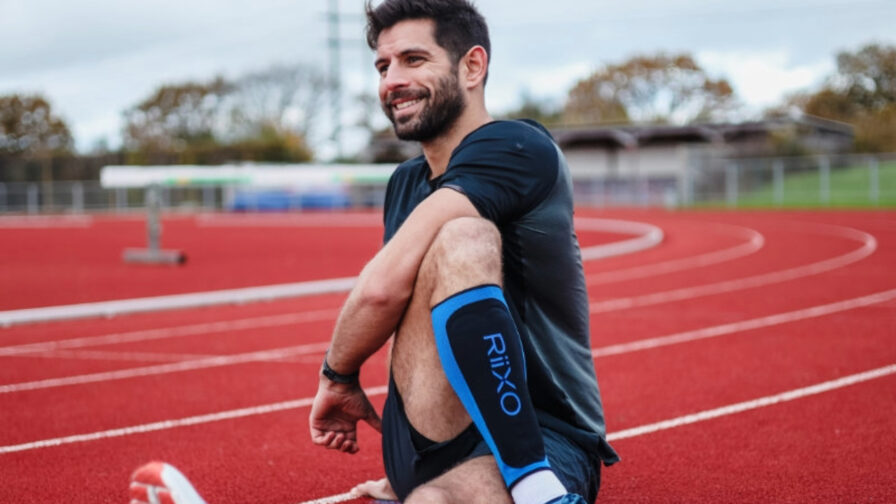
A review of the research literature into the effect of compression on muscle recovery by Araujo et al in 2018 found evidence that graduated compression garments can be beneficial in recovering muscle function and soreness. Studies have also shown that those wearing graduated compression garments experienced improved blood markers for muscle damage.
But it’s important to ensure your compression gear fits properly and offers the correct amount of compression to really feel the benefits.
Compression is one of the easiest ways for busy athletes to be proactive with their recovery. But ensuring the pressure is in the correct range really matters. If the garment is too tight, those post-exercise metabolites become trapped. Too loose and the sleeves do nothing to aid blood flow. At the correct pressure the sleeves aid your body by helping to flush waste and bringing nutrients to boost recovery.
Cam Johnston, physiotherapist and founder of Riixo Recovery.
Timing is also key. There’s a window of approximately 60 minutes post-exercise where what you do – or don’t do – can have an impact on your recovery time. For amateur athletes balancing training with the demands of work and life, that hour or so after exercise is usually a mad rush and taking time to properly prioritise recovery easily falls by the wayside. “Wearable solutions perfectly integrate with that hectic period after training that is key for recovery but where demands on your time are high,” says Cam Johnston.
If you’re struggling to recover properly from training sessions but you’re time pressed – wearing compression garments for an hour or so after exercise could be an easy win to speed up your recovery and ease muscle soreness.
Incorporate active recovery into your routine
Ever noticed that after a big training session, your muscles feel at their worst either first thing in the morning or after sitting down for a while? While it might feel counterproductive, getting moving is a great way to ease sore muscles and relieve any lingering muscle stiffness.
When we talk about active recovery, we mean gentle activity designed to get the muscles moving and the blood flowing without putting any additional stress or strain on the body. What that looks like will depend on your current level of fitness. It might be a walk or a short yoga session – or it might be an easy jog or bike ride. Active recovery stimulates blood flow which helps to remove any built-up waste products in the muscles and promotes faster muscular repair.
Alternate heat and ice to reduce muscle soreness faster
When you’ve got sore, inflamed muscles the first instinct is often to reach for an ice pack – or hop in an ice bath if you’re feeling brave. But there’s evidence to show that alternating between heat and ice can actually be a more effective recovery strategy to ease sore muscles. This is known as contrast therapy.
Exposing sore muscles to cold creates vasoconstriction, which can help to reduce swelling. Meanwhile applying heat conversely promotes vasodilation – drawing more blood to the area. Research has found that alternating between the two can promote more efficient blood circulation which reduces soreness.
For most of us, having access to an ice bath and a sauna to hop between probably isn’t practical. But there are recovery products out there which incorporate ice and heat applications into a wearable compression garment for a more convenient approach to contrast therapy. You can also use topical lotions with active ingredients such as menthol, wintergreen plant oil and arnica to get a cooling effect and reduce inflammation. And products containing liquid pepper extract (capsaicin) which can have a warming effect and promote blood flow.
Focus on getting good quality sleep to boost recovery
For age-group triathletes and other amateur endurance athletes balancing training with work, family and other life commitments. People often sacrifice sleep first to fit everything else in. And while we all know that regularly getting good quality sleep – and enough of it – is important for our general health, wellbeing and mood. It’s even more important when you’re trying to recover from a tough training sessions.
When we sleep, the body releases hormones which facilitate muscle recovery and repair. Not getting enough sleep can impair the body’s ability to adapt to your training load, and leave you with lingering fatigue and muscle soreness. If you consistently find yourself reaching the middle of the week too tired and achy to complete your training sessions. It might be worth skipping that early morning alarm the day after a tough session, so you can recover properly and be more consistent overall.
DOMs and muscle recovery FAQs – how to relieve sore muscles
Exercise causes small microtears to the muscles, resulting in muscle soreness. These tears prompt the body to adapt, repair and strengthen the muscle. But the inflammation causes soreness and muscular fatigue during the recovery process.
Muscle soreness typically sets in 24-48hrs after exercise, and typically lasts 3-5 days.
Light training or active recovery is usually fine, as long as the muscle soreness isn’t impeding your movements and you can maintain good form. Consider reducing the intensity of your training until you feel less fatigued. If soreness hinders your movement or if it feels more like an injury-related pain, take a rest day and consult a professional if necessary.
There’s no quick fix. But gentle movement, mobility work, using recovery tools such as compression gear, prioritising good nutrition and getting quality sleep will help sore muscles to recover faster.






